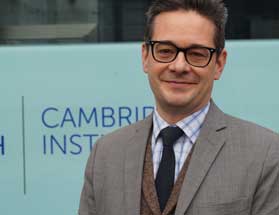
Scientists have discovered why a curable type of childhood brain tumour is so responsive to chemotherapy – paving the way to improve treatment of tumours that are harder to tackle, according to research by a Cancer Research UK scientist published in Cancer Cell yesterday.
This study shows that a curable type of brain tumour in children – called WNT medulloblastoma – grows ‘leaky’ blood vessels that allow much higher than normal levels of chemotherapy drugs to reach the cancer cells. Medulloblastoma is a malignant brain tumour, usually found in children, that begins in the lower part of the brain and can spread to the spine or to other parts of the body.
Healthy blood vessels in the brain can filter potentially damaging molecules and prevent them from reaching brain tissue. But this can also restricts drugs from reaching tumour cells in the brain.
But in a tumour with leaky blood vessels, like certain types of medulloblastoma, these molecules cannot be kept out.
Understanding why curable tumours are easier to treat could help find more effective treatments for less curable types of medulloblastoma. For these patients, researchers think they might be able to turn this barrier off and make the tumours more responsive to chemotherapy.
Professor Richard Gilbertson, lead author who recently became Director of the Cambridge Cancer Centre and leads a research group at the Cancer Research UK Cambridge Institute, said: “This research is exciting because it means that as well as finding kinder treatments for a curable type of brain tumour, we may also be able to manipulate brain tumours that are difficult to treat successfully to make them more responsive to treatment.
“This could make chemotherapy even more effective and reduce the amount of radiation that we give to children. This would mean fewer long term side effects for children later in life which is something we’re always working towards.”
Professor Pamela Kearns, Cancer Research UK’s children’s cancers expert, said: “This research gives us valuable insight into why some brain tumours respond better to chemotherapy than others. While cancer survival rates overall have doubled over the past 40 years, treatments for brain tumours have seen much slower progress. And brain tumours in children remain a major challenge.
“Cancer Research UK have made these challenges areas of priority and set up a specific Kids & Teens campaign to increase the investment in research focussed on children’s cancers. More research is needed to help us find ways to diagnose and treat the disease earlier and develop more effective treatments that have less of the long term side effects that can have a major impact throughout a child’s adult life.”
This research was funded by St Jude’s Children’s Research Hospital, Boston Children’s Hospital and Stanford University Medical Center.
Find out more about Professor Gilbertson's research in the Cancer Research UK Science blog.
The research paper is published here: Phoenix et al., Medulloblastoma genotype dictates blood brain barrier phenotype. Cancer Cell, 2016.















